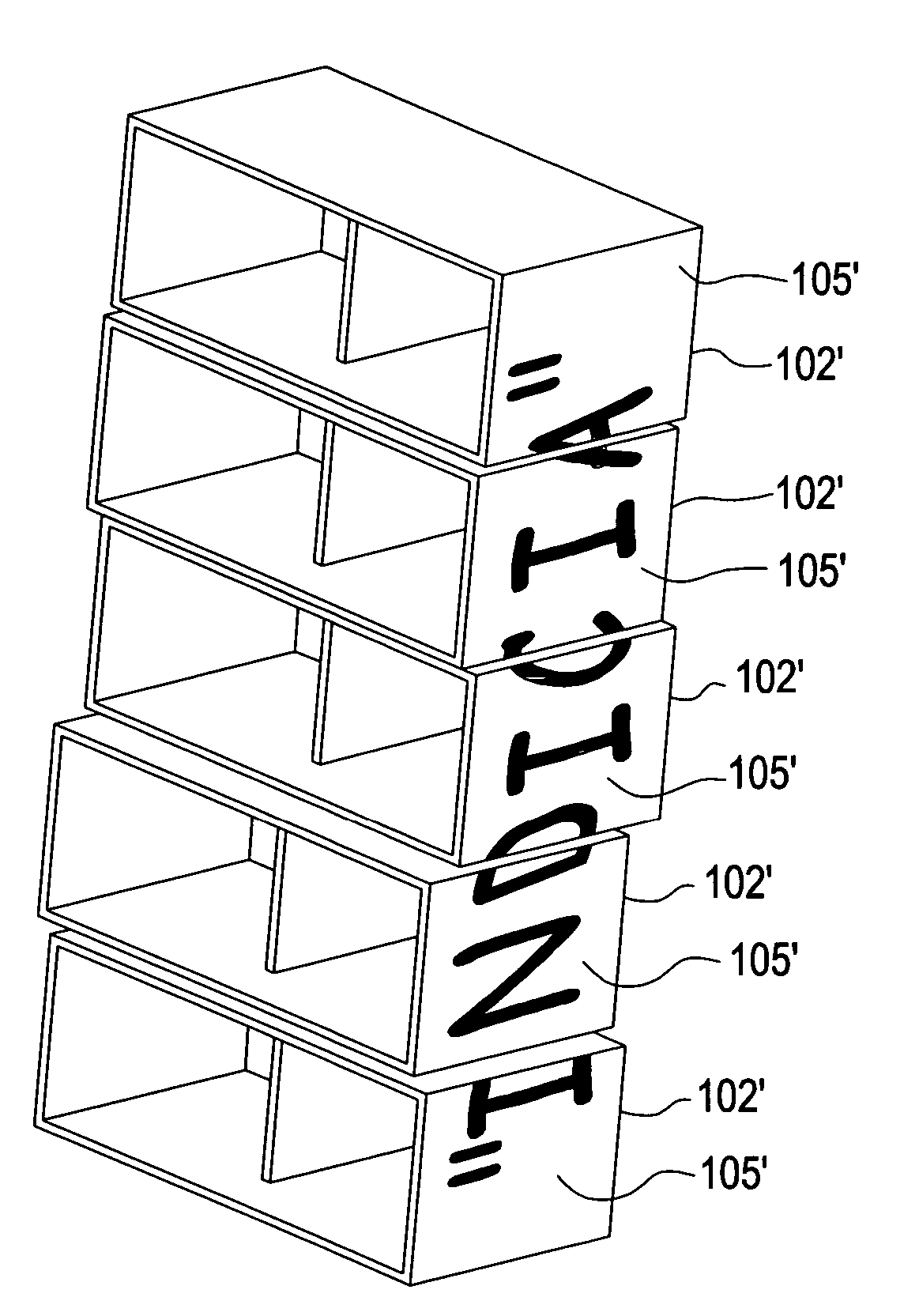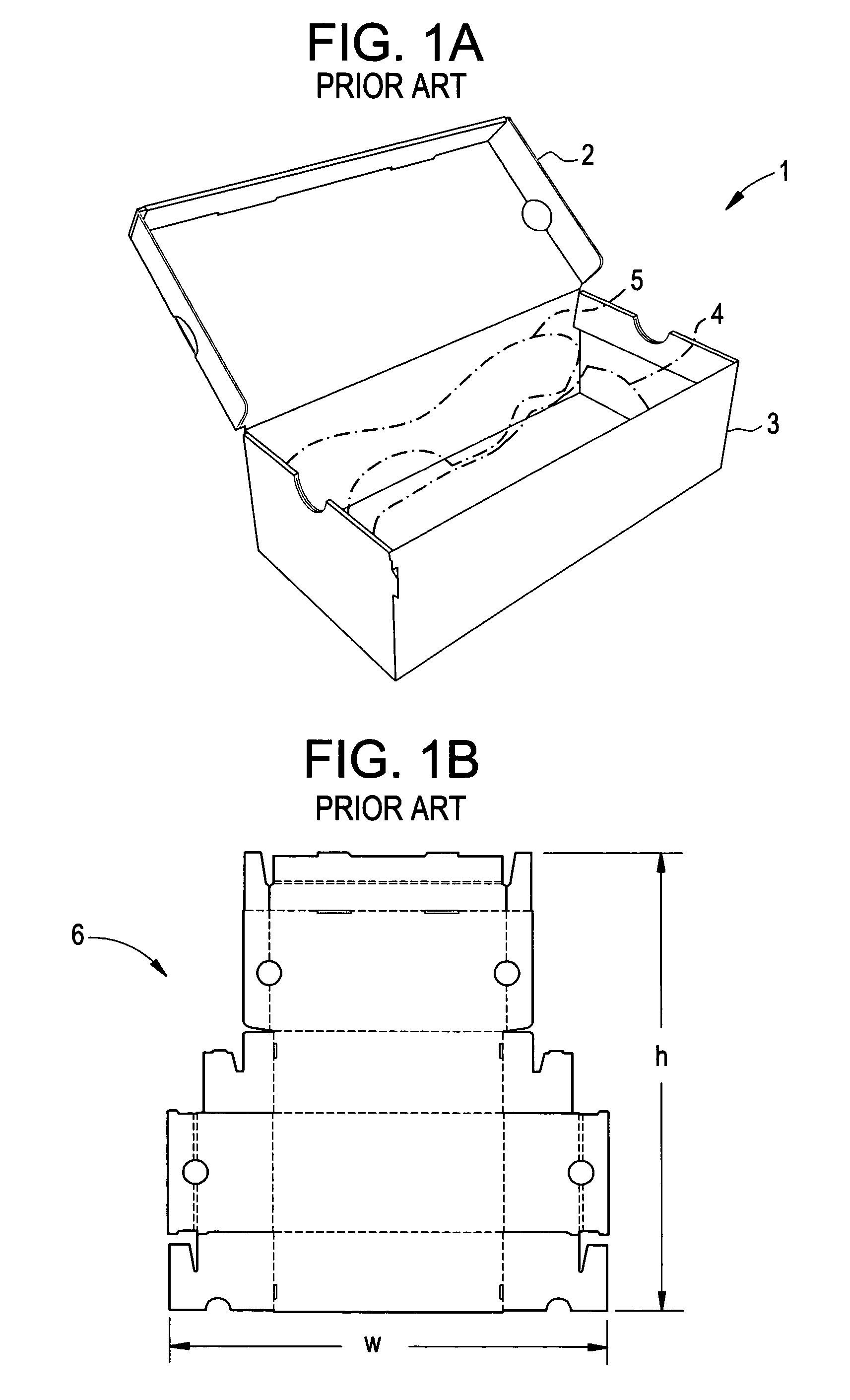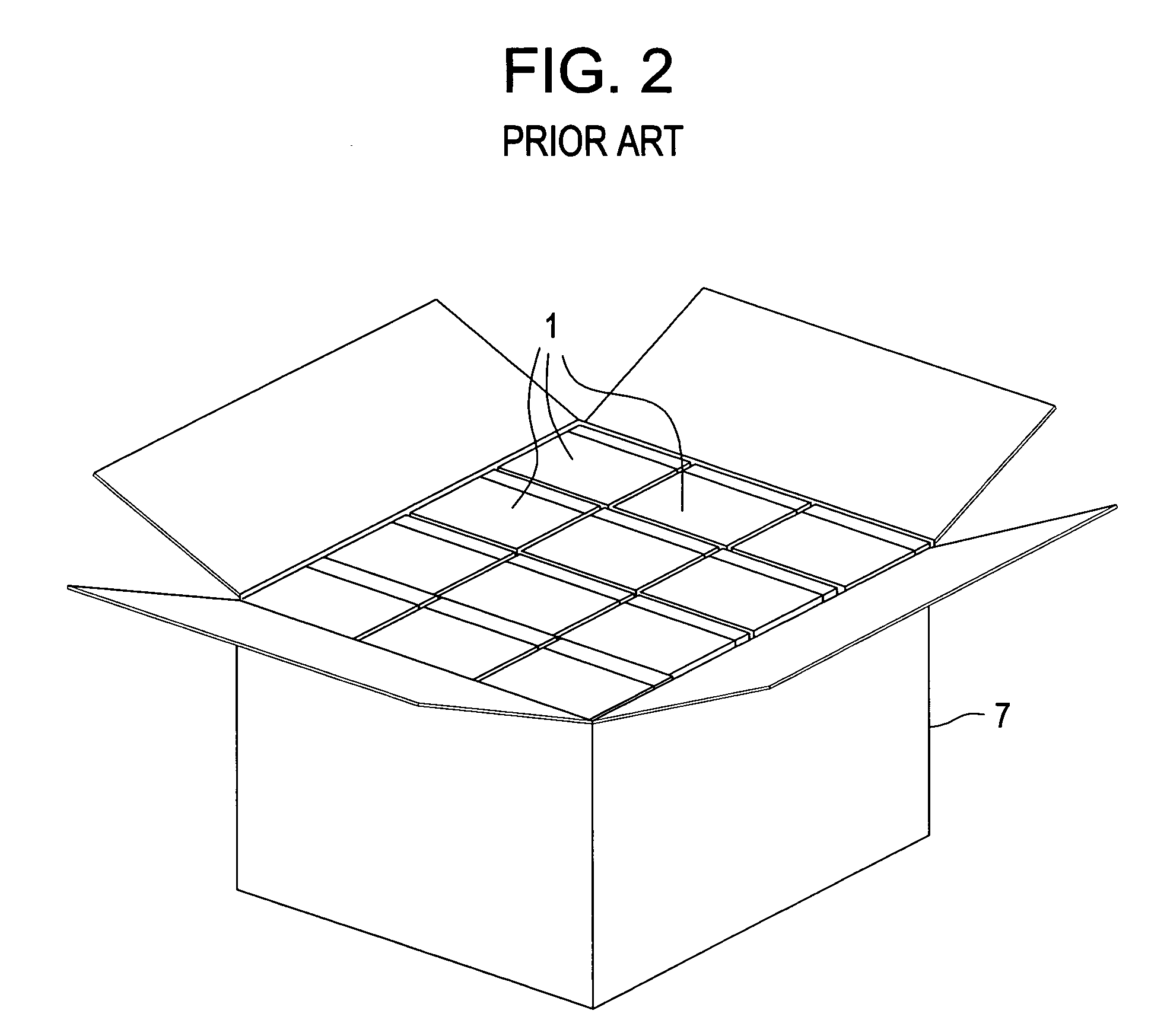System and method for footwear packaging
a shoe box and shoe technology, applied in the field of shoe box packaging, can solve the problems of substantial material expense, consumers may fail to do, and the use of shoe boxes is often not environmentally friendly practice,
- Summary
- Abstract
- Description
- Claims
- Application Information
AI Technical Summary
Benefits of technology
Problems solved by technology
Method used
Image
Examples
Embodiment Construction
[0025]In at least some embodiments of the invention, shoe pairs are not placed in individual shoe boxes. Instead of placing shoes into relatively expensive and environmentally-wasteful boxes, shoe pairs are placed into bag-type retail packages. As can be appreciated from the description to follow, use of bags instead of boxes substantially reduces the amount of packaging material used for each pair of shoes. Thus, even if consumers fail to recycle those bags after purchasing shoes, the amount of unrecycled material is significantly reduced. Because less material is needed to manufacture a bag than is needed to manufacture a shoe box, packaging expense can be reduced. This cost savings also permits use of graphics and other design features for shoe bags which could be prohibitively expensive if used with shoe boxes. Additional features and advantages are described below.
[0026]FIG. 3 shows one example of a pair of shoes 20 packaged according to at least some embodiments of the inventi...
PUM
| Property | Measurement | Unit |
|---|---|---|
| size | aaaaa | aaaaa |
| size | aaaaa | aaaaa |
| size | aaaaa | aaaaa |
Abstract
Description
Claims
Application Information
 Login to View More
Login to View More - R&D
- Intellectual Property
- Life Sciences
- Materials
- Tech Scout
- Unparalleled Data Quality
- Higher Quality Content
- 60% Fewer Hallucinations
Browse by: Latest US Patents, China's latest patents, Technical Efficacy Thesaurus, Application Domain, Technology Topic, Popular Technical Reports.
© 2025 PatSnap. All rights reserved.Legal|Privacy policy|Modern Slavery Act Transparency Statement|Sitemap|About US| Contact US: help@patsnap.com



